- Radon
- Posted
Radon in groundwater

Over the last few years Irish people have become more and more aware of the dangers posed by radon gas. New buildings are fitted with radon membranes as standard practice, in an effort to prevent high levels of the odourless, tasteless, invisible gas, from entering. However, as Aine Mc Elhinney discovered during a recent study of radon levels in groundwater in Wicklow, the threat radon poses to private water supply needs addressing to help prevent lung cancer deaths.
Radioactivity; the very word conjures up images of mushroom clouds, mad scientists and the disaster at Chernobyl.
Radioactivity is both a consequence and a determinant of the state of the planet. Our world is radioactive and has been since it was created. Radionuclides are found naturally in air, water and soil. Natural radioactivity is common in the rocks and soil that makes up our planet, in water and oceans, and in our building materials and homes. This type of radioactivity is exhibited by several elements, including uranium, radium, radon, and radon's daughters.
Of all the radioisotopes that contribute to natural background radiation, radon presents the largest risk to human health. Radon is an invisible, odourless and tasteless radioactive gas and can only be measured using special equipment. It emits high-energy alpha particles with relatively short half lives. Accounting for more than 60% of the total dose from all sources of ionizing radiation received by the Irish population, exposure to radon and its progeny is associated with an increased risk of cancer. Radon activity is measured in Becquerels (Bq), where one Becquerel (Bq) represents one radioactive disintegration (a nucleus giving off a ray or particle) per second.
Attention has been focused on the issue of radon in drinking water in Ireland by a European Commission recommendation, 2001, proposing that surveys should be undertaken in Member States to determine the scale and nature of exposures caused by radon in domestic drinking water supplies. The Commission recommends 1000 Bq/l as the radon activity concentration in private drinking water above which remedial action to reduce the concentration should be considered. The logic behind the proposed action level is that it would broadly correspond to the risk posed to an individual from exposure to radon in the atmosphere in the home at the current Reference Level of 200 Bq/m3. This Reference Level applies in Ireland and several other EU Member States. It is further recommended that remedial action should be considered when public supplies are found in excess of 100 Bq/l.
Inhalation of radon is the second leading cause of lung cancer and its ingestion in water may result in an increased dose to other organs, such as the stomach. Smokers are 25 times more likely than non-smokers to develop lung cancer due to inhalation of radon gas, according to a recent Europe-wide survey on the health risks of radon gas, which has been reviewed by the Radiological Protection Institute of Ireland (RPII) and the National Cancer Registry of Ireland (NCRI).
When applied to the Irish situation, the results of the research suggest that radon is directly responsible for up to 200 lung cancer deaths each year and that those whose lungs have also been damaged by tobacco smoke account for the vast majority of these deaths. Passive smokers are also at greater risk, as are former smokers, who remain at increased risk for many years after they quit. The relationship between drinking water and indoor radon concentration is an important problem for environmental radiology and one that is perhaps underestimated. During domestic water use, as the water is heated and the radon becomes less soluble, radon from water is degassed into the indoor air. It has been determined that inhalation of the radon dissolved in and released from water for human consumption accounts for 89 per cent of the estimated cancer risk from radon in water, whereas ingestion of radon in drinking water accounts for 11 per cent.

During domestic water use, as the water is heated and the radon becomes less soluble, radon from water is degassed into the indoor air
Thus radon presents a unique regulatory problem in that its efficient transfer from water into indoor air produces a risk from the inhalation of its decay products. Therefore, it may be regulated as a radionuclide in water, but a major portion of the associated risk occurs because of its contribution to the airborne radon concentration.
Radon is highly mobile and nearly ubiquitous in environmental media. To understand the geology of radon, where it forms, how it forms, how it moves, it is necessary to start with its source, uranium. Radon production is ultimately linked to the natural distribution of uranium in the earth's crust, as it is a product of uranium’s decay chain. All rocks contain measurable amounts of uranium varying according to their geochemical controls and genesis, but it concentrates in granites and shales. Therefore radon is constantly being emitted from the rock and soil under our feet.
Surveys in European member states have shown that radon concentrations in surface waters, such as rivers and lakes, are very low, usually well below 1 Bq/l. Concentrations in ground water vary from 1 to 50 Bq/l for rock aquifers in sedimentary rocks, to 10 to 300 Bq/l for wells dug in soil, and to 100 Bq/l to 50,000 Bq/l in crystalline rocks. The highest concentrations are usually associated with high uranium concentrations in the bedrock (granite).
Radon accumulates in groundwater due to two different sources, firstly the radioactive decay of dissolved radium (radon’s immediate parent in the uranium decay chain), and secondly the direct release of radon from the mineral matrix from minerals (in surrounding rocks) containing members of the uranium decay chain.
Groundwater from County Wicklow was analysed for radon activity recently, for all major ion concentrations, standard hydrochemical, and geological/hydrogeological parameters. This project is a follow-up of the report by the Radiological Protection Institute of Ireland on radon in drinking water in County Wicklow (Ryan, Sequeira, McKittrick & Colgan, (2003). Wicklow was chosen as the study area as its bedrock is predominantly granite with elevated uranium concentrations – the Leinster Granite.
Groundwater from thirty households in the county, that use private boreholes as their primary supply, was sampled and analysed in duplicate for radon, in conjunction with the Radiological Protection Institute of Ireland, The Nuclear Physics Department UCD and Wicklow County Council.
The Radiological Protection Institute of Ireland is the national organisation with regulatory, monitoring and advisory responsibilities in matters pertaining to ionising radiation. Of the thirty groundwater supplies sampled, five had radon activity concentrations that exceeded 1000 Bq/l, (representing 16% of the total). Of these, four had been identified by the RPII in the previous study and were retested; the remaining supply was as a result of targeted sampling. Nine houses had activity concentrations between 500 and 1000 Bq/l (31%), eleven had activity concentrations between 100 and 500 Bq/l (38 %) and four had activity concentrations less than 100 Bq/l (14%). The lowest concentration measured was 1.2 Bq/l, which is about equal to the minimum reporting level for the analytical method.

Groundwater from Co Wicklow was analysed for Radon activity recently, for all major Ion concentrations, standard Hydrochemical, and geological/hydrogeolical parameters.
The EU Drinking Water Directive (98/83/EC) on the quality of water intended for human consumption stipulates that, should the annual radiation dose arising from one year’s consumption of drinking water exceed 0.1 milliSievert (mSv), it must be considered whether this poses a risk to human health. However, radon and its decay products are excluded from the calculation of the 0.1 mSv/y.
The estimated radiation dose, for a given activity concentration of radon, varies significantly depending on the water consumption rates and the dose conversion factors used.
The annual consumption of water by individuals can also vary significantly. As radon is generally removed efficiently from water on agitation or boiling, the dose also depends on that fraction of water that has been consumed from the tap without processing. Water consumption habits were not addressed in this study. A range of potential annual doses to adults from the consumption of water over a range of radon activity concentrations and water consumption rates has been estimated (Ryan et al., 2003).
The dose calculations are based on the assumption that all of the water consumed at the rates indicated is directly from the tap without further processing such as boiling. A range of possible annual doses to adults from the consumption of water from the thirty houses found in this study has been estimated. The results indicate that even at seemingly modest consumption rates of water containing radon identified in this study, relatively high radiation doses can be potentially received. The highest value in this study would result in a radiation dose to an adult consumer of 13.12 mSv annually. This is up to four times the annual average dose of 3.62 mSv (Ryan et al., 2003) to a person in Ireland from all sources of radioactivity (in other words cosmogenic, natural and artificially produced radiation). This dose estimate may be significantly higher for children and infants.
According to UNSCEAR (2000), doses to children and infants for similar consumption rates could be a factor of 2 and 7 higher, respectively.
In a geological environment, radon concentrations generally differ among different rock types and can vary considerably within the same geological group. Waters originating from granite formations have been identified as having elevated concentrations of 222Rn and other radionuclides in the uranium series. Eighty per cent of the samples in this study that exceeded 1000 Bq/l are found within the Leinster granite, that is fourteen per cent of the total.
The radon concentrations in groundwater in the geological units in this study are indicative of the uranium content of aquifer materials and generally are consistent with reported average uranium concentrations of various rock types. The uranium content of granite and some shales is on average greater than in limestone, basalt, sandstone, and metamorphic rocks. In Wicklow, radon concentrations were greater in groundwater from granites, than in the metamorphic rocks in the area.
The higher uranium content of granitic rocks is a result of a natural process called magmatic differentiation that occurs during magma cooling and results in the uranium content increasing from the first to the last formed rock. Among the samples in the non-granitic area only one sample registered >1000 Bq/l, and this sample is located in the schists and phyllite of the Maulin Formation, which are metamorphosed clastic sediments including shale. Interestingly all of these samples in granites exceeding 1000 Bq/l were found in the adamellite variety of the Leinster Granite.
This lithology is composed of microcline, plagioclase, muscovite, biotite and quartz, with accessory Fe-oxide, sphene, apatite, zircon, rutile, and garnet. These results suggest the granitic composition of the aquifer is the primary factor controlling the spatially dependent component of the variation in groundwater radon concentration.
The two highest radon activity concentration which were recorded in the study respectively (>2000 Bq/l) lie in a structurally complex zone of faulted and foliated granite in the southern part of the Leinster Granite (Tullow Pluton). Density of faulting was investigated in respect to radon concentrations.
In the study area as a whole there were no significant correlations between radon concentrations and density of faulting, however, in one pluton (Tullow Pluton) fault density (at 12.5km2) showed a statistically significant positive correlation with radon concentration.
Faults, fractures and shear zones are important controls on radon distribution as they serve as conduits to the surface for radon produced at depth. Major fractures and associated microfractures are required in order to have significant quantities of radon escape from low porosity and permeability (which limits radon’s mobility) source rocks such as granites.
Faulting within impermeable rocks such as granite is thus the main source of fluid flow as they create relatively permeable and porous zones within the granite. These fractured rocks then provide pathways for aqueous solutions containing dissolved uranium, radium or radon, allowing these solutions to migrate within the impermeable strata.
Interest in the spatial distribution of radon is increasing. Research into the contribution of radon in groundwater entering houses to the overall indoor atmosphere radon concentration is vitally required in order to assess the risk posed by radon in groundwater.
Any attempt to identify areas in Ireland with groundwater radon problems should incorporate all available geoscientific information, such as mineralogical, geochemical and geophysical information in connection with groundwater mapping programmes. The procedure that is recommended from this study for estimating radon concentrations in groundwater is to stratify the area on the basis of lithology first, and then determine all geological structure within the sample area.
If the former is done reliably, sampling should then be optimised to estimate the mean radon concentration within the geological units reliably. If there is spatial dependence remaining within the classes then sampling should be optimised for structure mapping and mineralogical mapping. This should provide reliable estimates of radon concentration within strata.
The spatial variation of radon in groundwater is attributed primarily to lithological and mineralogical variation in the geology of County Wicklow and secondarily to small-scale geological structures.
Since no compulsory limit for radon in drinking water supplies have yet been set in Ireland, compulsory radon monitoring by regulatory authorities in Ireland has not been established. This had led to a lack of knowledge about the geographic distribution of radon which is vitally needed in water supply planning and development.
The implementation of compulsory limits for radon in drinking water would probably trigger an avalanche of measurements of public and private water supplies, leading to a better understanding of the spatial distribution of elevated concentrations. Compulsory testing of all new wells drilled for radon is recommended (by this author, although this is not the opinion of the RPII), especially in areas considered most at risk—for example, areas with underlying granitic bedrock.
Radon in drinking water is controllable in the physical and engineering sense; effective methods for removing radon from drinking water have been developed and are commercially available. The options for remediation are granular activated carbon (GAC) filtration and aeration. The drawback of GAC filtration is the elevated gamma dose rates that can occur near the filter and the build up of radioactivity on the filter which can give rise to problems with disposal. This is not a problem with aeration, which appears to be the preferred option for domestic supplies. However, defects in technical reliability or radon removal efficiency were observed in a small number of commercial aerators available in some European countries.
In general high radon activity concentrations indicate the potential presence of other radionuclides of the uranium decay series in the water. Therefore where remedial action is taken, the possible presence of other natural radionuclides should be considered.
Related items
-
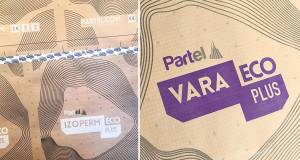 Partel launches paper-based membranes
Partel launches paper-based membranes -
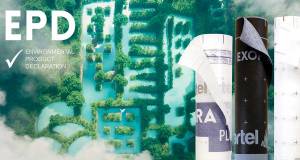 Partel obtains EPDs for airtight membranes
Partel obtains EPDs for airtight membranes -
 EU proposes gas demand reduction plan till spring
EU proposes gas demand reduction plan till spring -
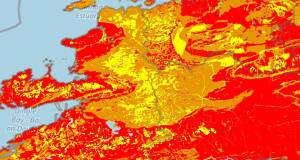 45,000 more Irish homes face radon risk, new maps reveal
45,000 more Irish homes face radon risk, new maps reveal -
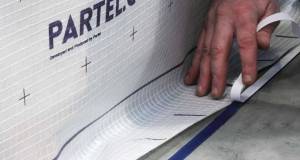 Partel launches new Acraline Roll adhesive
Partel launches new Acraline Roll adhesive -
 How do breather membranes work?
How do breather membranes work? -
 Partel’s Izoperm Plus achieves passive house ‘A’ cert
Partel’s Izoperm Plus achieves passive house ‘A’ cert -
 Liquid membranes transforming airtightness work — Blowerproof UK
Liquid membranes transforming airtightness work — Blowerproof UK -
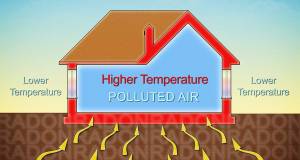 Poorly ventilated retrofits can double radon retrofit risk, study finds
Poorly ventilated retrofits can double radon retrofit risk, study finds -
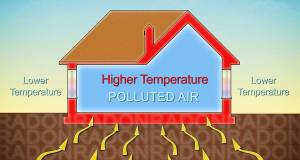 Radon in passive houses
Radon in passive houses -
 Landmark case may empower tenants on radon
Landmark case may empower tenants on radon -
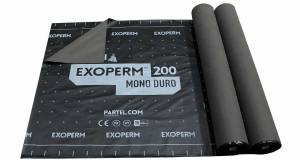 Partel launches new fire-rated breather membrane
Partel launches new fire-rated breather membrane

